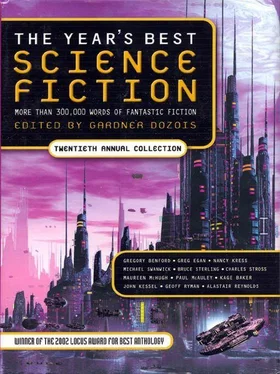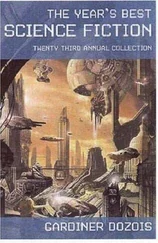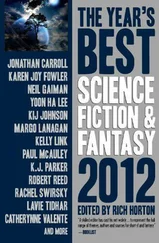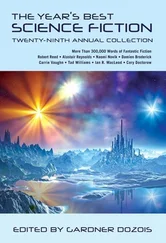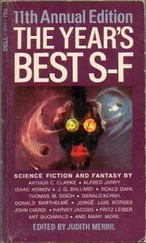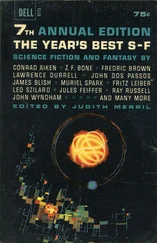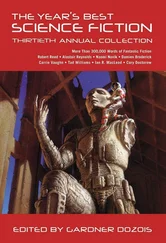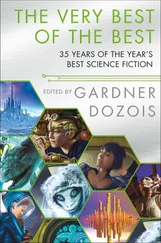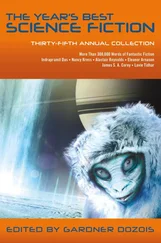Gardner Dozois - The Years Best Science Fiction, Vol. 20
Здесь есть возможность читать онлайн «Gardner Dozois - The Years Best Science Fiction, Vol. 20» весь текст электронной книги совершенно бесплатно (целиком полную версию без сокращений). В некоторых случаях можно слушать аудио, скачать через торрент в формате fb2 и присутствует краткое содержание. Жанр: Фантастика и фэнтези, на английском языке. Описание произведения, (предисловие) а так же отзывы посетителей доступны на портале библиотеки ЛибКат.
- Название:The Years Best Science Fiction, Vol. 20
- Автор:
- Жанр:
- Год:неизвестен
- ISBN:нет данных
- Рейтинг книги:5 / 5. Голосов: 1
-
Избранное:Добавить в избранное
- Отзывы:
-
Ваша оценка:
- 100
- 1
- 2
- 3
- 4
- 5
The Years Best Science Fiction, Vol. 20: краткое содержание, описание и аннотация
Предлагаем к чтению аннотацию, описание, краткое содержание или предисловие (зависит от того, что написал сам автор книги «The Years Best Science Fiction, Vol. 20»). Если вы не нашли необходимую информацию о книге — напишите в комментариях, мы постараемся отыскать её.
The Years Best Science Fiction, Vol. 20 — читать онлайн бесплатно полную книгу (весь текст) целиком
Ниже представлен текст книги, разбитый по страницам. Система сохранения места последней прочитанной страницы, позволяет с удобством читать онлайн бесплатно книгу «The Years Best Science Fiction, Vol. 20», без необходимости каждый раз заново искать на чём Вы остановились. Поставьте закладку, и сможете в любой момент перейти на страницу, на которой закончили чтение.
Интервал:
Закладка:
2002 was another tough year in the magazine market, but at least the overall losses in circulation were relatively small as opposed to the huge plunges we’ve seen in other years, and there were small gains to partially balance off the losses-although these varied from magazine to magazine, so that Asimov’s Science Fiction gained in subscriptions but lost in newsstand sales, while The Magazine of Fantasy and Science Fiction lost subscriptions but gained in newsstand sales, and so forth.
Last year I went into great detail explaining the publishing factors that were battering the whole magazine industry, regardless of genre, far beyond the boundaries of the science fiction field, including former mega-sellers such as Playboy and TV Guide, and some of the technical reasons why things might not be quite as bad in the SF magazine world as they appeared to be-and, as I’d feared going in, it was largely a waste of time, as I still spent the rest of the year fielding questions in interviews and convention panels about the “Death of Science Fiction” as indicated by declining magazine circulation and listening to remarks about how the editors must be buying the wrong kinds of stories or the circulations wouldn’t be going down. I can’t summon the strength to go through all that again (read the Summation for The Year’s Best Science Fiction, Nineteenth Annual Collection, if you’d like to see the arguments). So I’ll settle for mentioning that while it’s tough to put too positive a spin on the situation in the current SF magazine market, and, of course, no magazine editor is happy to see his overall circulation decline, one factor that is often overlooked is that while circulation decreased by small amounts at most magazines this year, sell-through, the number of magazines that must be put out in the marketplace to sell one, has increased, increased dramatically in some cases-at Asimov’s, sell-through was up to a record 56% last year; at Analog, sell-through was up to a record 55%; and at The Magazine of Fantasy and Science Fiction, sell-through was up to 37%. This is a factor that goes straight to the profitability of a magazine. To achieve a 35% sell-through, for instance, means that three times as many magazines are printed and put on the newsstands as actually sell: if you can cut-back on the number of unsold copies you have to put out there in order to actually sell one, your sell-through increases, and you save a lot of money in production costs by not having to print and distribute as many “extra” copies that no one is going to buy. This is one of the hidden factors, along with how cheap digest-sized magazines are to produce in the first place, that is, so far anyway, helping to keep the SF magazine market afloat.
If you had a 100% sell-through, you wouldn’t print any more copies of an issue than you were actually going to sell-and you’d probably be a subscription-only magazine, where they know in advance exactly how many copies of an issue they need to print. It may well be that the SF magazines, the digest magazines in particular, are eventually going to go this route, as newsstands themselves dwindle in numbers, and the ones that are still around become ever more reluctant to display fiction magazines-especially digest-sized magazines that don’t really fit into the physical format of most newsstands very well. And most of the digests could probably survive as subscription-only magazines, considering how much newsstand sales have fallen off over the last ten years anyway (the same problem being faced by many other magazines, not just genre magazines). The problem is that the purpose of putting more copies out on the newsstand than you expect to sell in the first place is that the extra copies act as advertising, tempting potential new subscribers into picking them up. If you only print as many copies as your existent subscriber-base, nobody ever chances across a copy somewhere of a magazine they might not even have known existed until that moment, and that makes it hard to gain new subscribers-and eventually your subscription-base is eroded away, as old subscribers die or fall away and are not replaced by new ones.
Can use of the Internet, supplemented by distribution to bookstores rather than to newsstands, solve the advertising/promotional problem of attracting new subscribers that used to be solved by putting extra copies out on the newsstand? No one yet knows-but most of the magazine editors I know are giving it their best shot.
As use of Internet Web sites to push sales of the physical product through subscriptions is becoming increasingly important, I’m going to list the URLs for those magazines that have Web sites: Asimov’s site is at www.asimovs.com. Analog’s site is at www.analogsf.com. The Magazine of Fantasy amp; Science Fiction’s site is at www.sfsite.com/fsf/. Interzone’s site is at www.sfsite.com/interzone/. Realms of Fantasy doesn’t have a Web site per se, although content from it can be found on www.scifi.now.com The amount of activity varies widely from site to site, but the important thing about all of the sites is that you can subscribe to the magazines there, electronically, online, with just a few clicks of some buttons, no stamps, no envelopes, and no trips to the post-office required. And you can subscribe from overseas just as easily as you can from the United States, something that was formerly difficult-to-impossible. Internet sites such as Peanut Press (www.peanutpress.com) and Fictionwise (www.fictionwise.com), which sell electronic downloadable versions of the magazines to be read on your PDA or home computer, are also becoming important.
At any rate, to get down to hard figures, Asimov’s Science Fiction registered a 1.7 loss in overall circulation in 2002, gaining 504 in subscriptions, but losing 1,078 in newsstand sales. Analog Science Fiction amp; Fact registered a 2.4% loss in overall circulation in 2002, gaining 490 in newsstand sales but losing 1,504 in subscriptions. The Magazine of Fantasy amp; Science Fiction registered a 10.1% loss in overall circulation, gaining 374 in newsstand sales, but losing 3,038 in subscriptions. Interzone held steady at a circulation of about 4,000 copies, as it has for several years, more or less evenly split between subscriptions and newsstand sales. No circulation figures for Realms of Fantasy were available.
The lively little Scottish SF magazine Spectrum SF has published so much good professional-quality work over the last three years, including good stories this year by Colin P. Davies, Eric Brown, Chris Lawson, Adam Roberts, and the serialization of Charles Stress’s novel The Atrocity Archive, that I’m listing it here with the professional magazines, rather than in the semiprozine section, where its circulation by rights ought to put it. Unfortunately, not all is well at Spectrum SF; they managed to produce only two out of a scheduled four issues this year, and in the most recent issue, editor Paul Fraser announced that in the future, due to financial difficulties and constraints on his time, Spectrum SF is going to be an “occasional” magazine, cut-back from its quarterly schedule to appearing perhaps a couple of times a year. I’m not sure how much practical difference this really makes, since the magazine never came remotely close to keeping its schedule anyway, but it would be a shame if Fraser became even more discouraged and threw in the towel altogether. So everyone, write lots of encouraging letters to Paul, with even more encouraging subscription money folded inside, because science fiction needs as many markets of this caliber as it can get; this little magazine publishes a disproportionate share of the year’s good fiction every year, and it would be a shame to lose it.
A new British magazine started up this year, 3SF, edited by Liz Holliday, the former editor of Odyssey magazine, which died several years back. The first issue was released in 2002. It’s a nice-looking magazine, with a range of interviews, book reviews, media reviews, and interesting articles on such offbeat topics as alternate history and the fate of English political refugees in eleventh-century Russia. The weakest part of the magazine to date, in fact, is the fiction-issue one features solid talents such as Richard Parks, Jay Lake, and Lawrence Watt-Evans, but nothing here rises much above average-competent, certainly nowhere near the level of the first-rate stuff that has been appearing in Spectrum SF. Let’s hope they can bring the quality of the fiction up in subsequent issues; certainly they have some very talented writers announced as appearing in upcoming issues: a good sign. We should all wish them well, as the field really does need as many viable short-fiction markets as it can get.
Читать дальшеИнтервал:
Закладка:
Похожие книги на «The Years Best Science Fiction, Vol. 20»
Представляем Вашему вниманию похожие книги на «The Years Best Science Fiction, Vol. 20» списком для выбора. Мы отобрали схожую по названию и смыслу литературу в надежде предоставить читателям больше вариантов отыскать новые, интересные, ещё непрочитанные произведения.
Обсуждение, отзывы о книге «The Years Best Science Fiction, Vol. 20» и просто собственные мнения читателей. Оставьте ваши комментарии, напишите, что Вы думаете о произведении, его смысле или главных героях. Укажите что конкретно понравилось, а что нет, и почему Вы так считаете.
